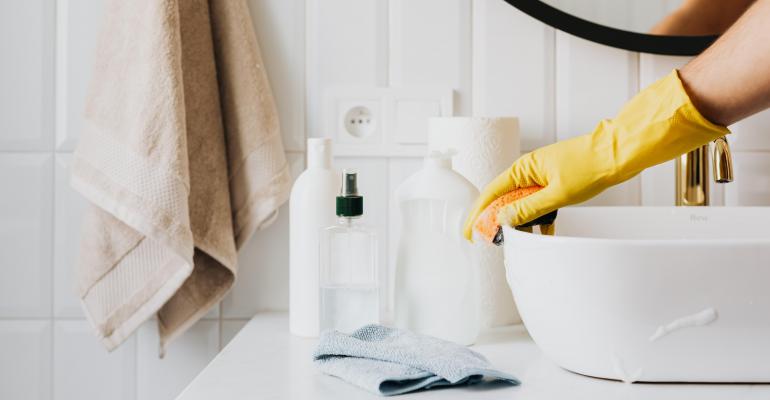In the webinar hosted by Tillberg Design of Sweden (TDoS), Lionel Ohayon, founder and CEO, iCRAVE; Greg Walton, partner and CEO, DADO; Chris Finch, founder and CEO, AD Associates; and Fredrik Johansson, director, TDoS, discussed their vision for cruise ship interior design.
Fittings and fixtures
‘We can change behaviour and make cleaning areas sexy, with nice fragrances – something beautiful’, said Johansson, as he explained how handwashing stations before entering ships’ dining areas could successfully be made overt and welcoming.
In response, Ohayon suggested ‘enhancing the guest experience’ by taking responsibility for greater cleanliness away from passengers, with automatic lighting and fixtures to minimise the number of people touching the same surfaces. In addition to touchless faucets on taps, for instance, Ohayon spoke about the potential for lighting above sink basins that change from red to green depending on whether handwashing has been carried out when moving between areas.
Embracing a new, futuristic guest experience, Walton spoke of achieving an elevated experience ‘subliminally’, with adaptions made to architecture and design that prompt passengers to follow certain paths around a cruise ship or adhere to essential hygiene measures.
Public image
Ohayon went on to share his aim of making the cruise ship a safe haven, a ‘safety raft’ that is widely accepted as infection-free, in the same way people feel reassured driving in their cars. ‘We need to spread people around so they’re [cruise ships] not like hotels on land … and reinvent the whole experience’.
Ohayon also spoke of more bespoke cruising experiences, including ships that are focussed on wellness or education to meet the needs of remote workers – assuming their quantity increases as a result of the pandemic.
Agreeing that COVID-19 means a ‘new way of life’ in the long-term, Walton went on to refer to the Ebola and SARS epidemics, commenting, ‘This isn’t the last pandemic we’re going to see … It’s telling us there’s more to come’ – a perception shared by Johansson, who added that cruise ships will need spaces where people can 'separate completely’ whenever necessary.
Operational and digital features
Payless entry points, contactless technology, tracing and COVID-19 ‘passports’ were other features that were considered as enabling the safe resumption of cruising.
Walton added, ‘The pandemic is giving us lessons to learn that will make the world better’.
Copyright © 2024. All rights reserved. Seatrade, a trading name of Informa Markets (UK) Limited.
Add Seatrade Cruise News to your Google News feed.  |

